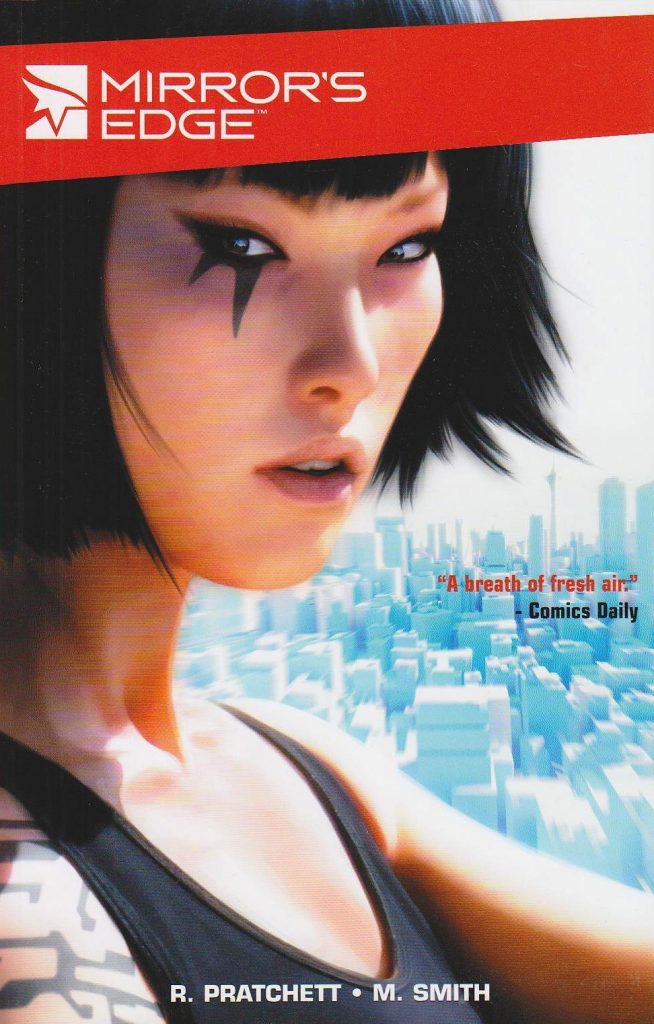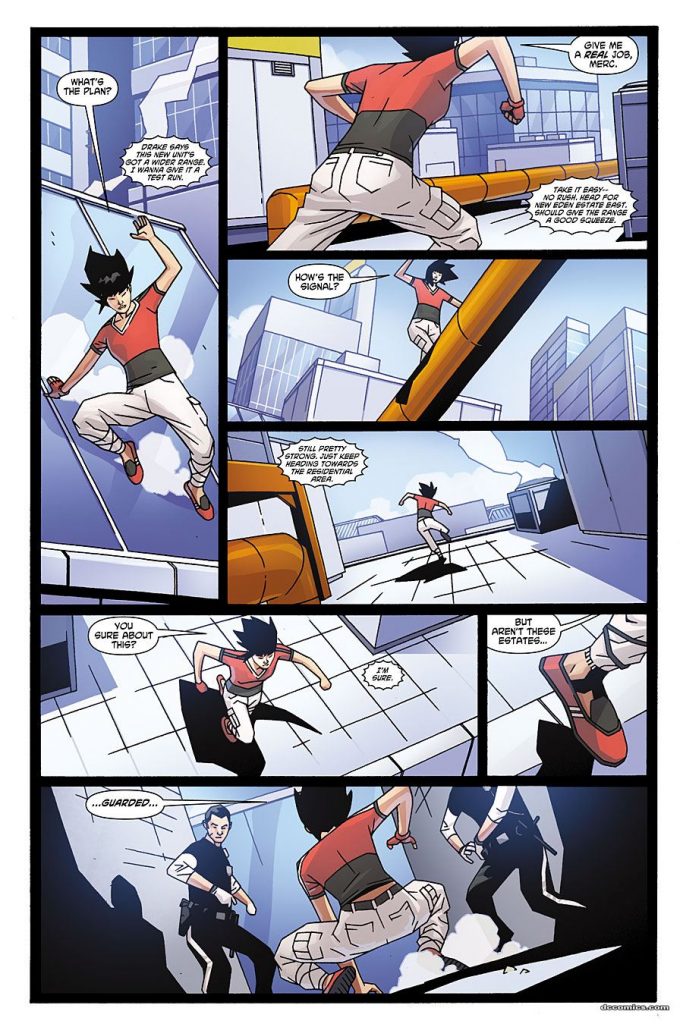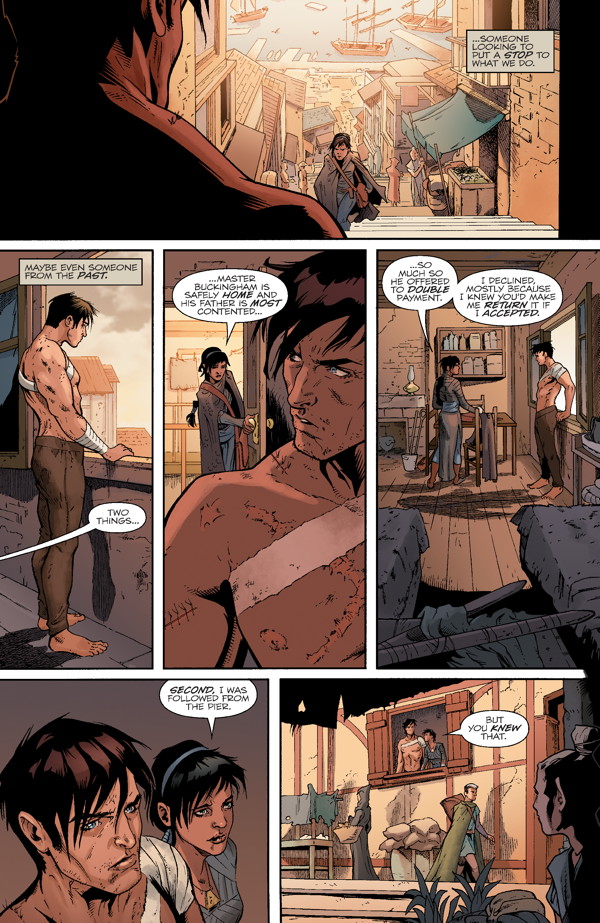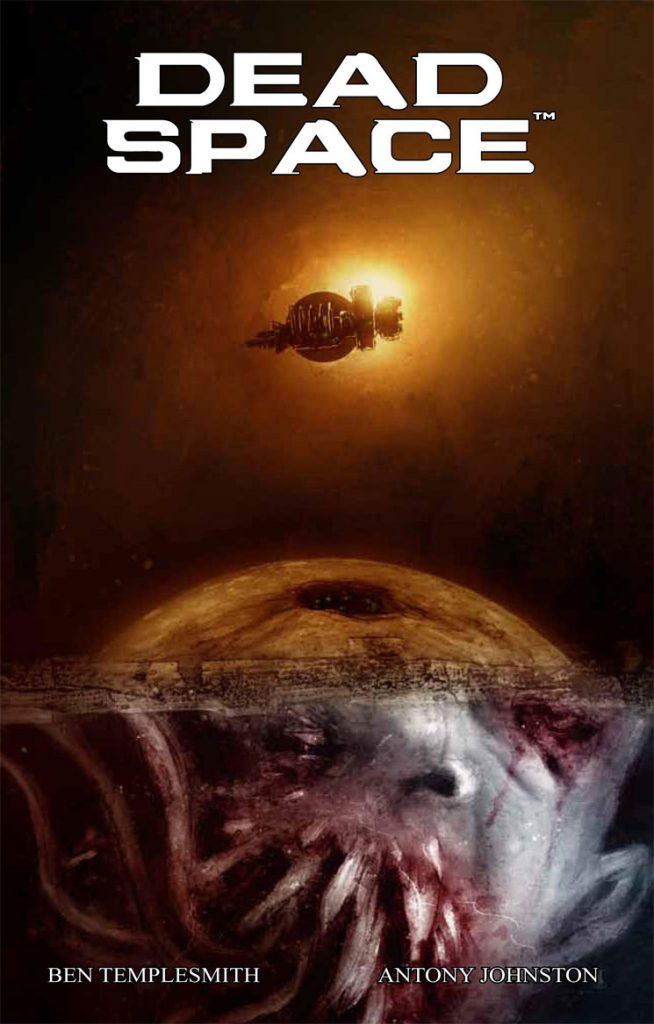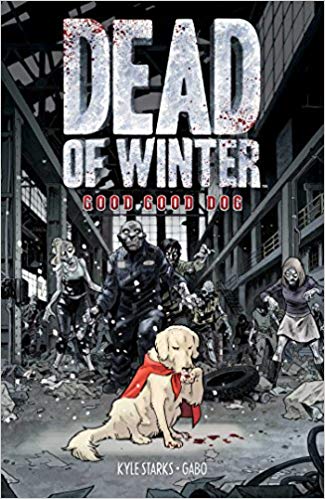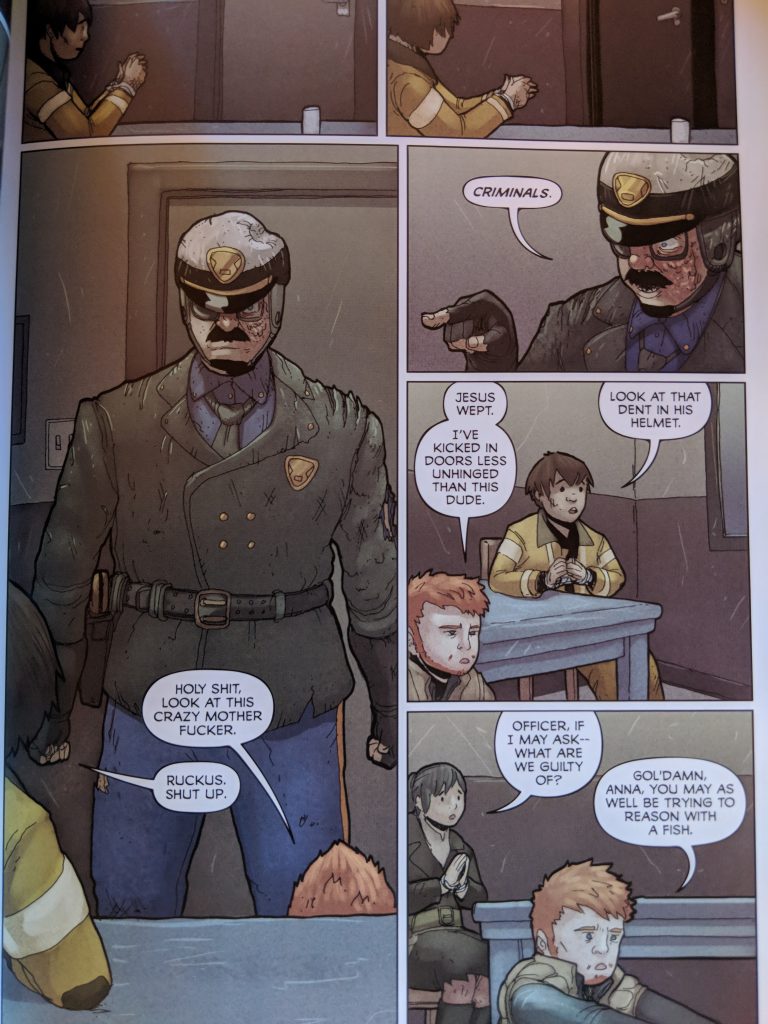Games!
As I’ve mentioned before, I’m a huge fan of games, both the cardboard and video varieties. As with many other types of adaptations, graphic novel adaptations of games have been largely hit or miss. So I figured that this week, I’d talk about some of the game to graphic novel adaptations that I felt deserved a bit more attention. In no particular order, here are some of my favorites!
Mirror’s Edge
Mirror’s Edge is a dystopian platforming game set in a near future in which society is ruled by constant government surveillance. A group of individuals known as “runners” offer a courier service for anyone wishing to avoid prying eyes. Playing as the main character Faith Connors, players parkour their way through the City, using combat only when more direct escape is not an option. When Faith’s sister Kate Connors (who happens to be a police officer with the City) is implicated in a murder, it’s up to Faith to get to the bottom of it before her sister is framed and delivered to a certain death in prison. A mix of George Orwell’s 1984 with elements of more recent cyberpunk, Mirror’s Edge is a game that forces players to question just how much security is worth losing freedom.
The comic Mirror’s Edge is written by Rhianna Pratchett with art by Matthew Dow Smith, Jon Bolerjack, Jim Charalampidis and lettered by Rob Leigh. Pratchett was heavily involved in the writing of the game and the comic brings readers back to Faith before the events of Mirror’s Edge. It starts with Faith still doing her trial as a beginning Runner and the first job that both established her in that world and challenged everything she had learned thus far. The comic does an excellent job of expanding on the world introduced in the game, providing more information on Faith’s parents and the background that drove her to become a Runner while her sister turned to the City police. The art style of the story also mimics the minimalist animation of the game’s cutscenes and made the story feel like a perfect match for the game. Overall, this is one of the best adaptations I’ve seen from game to comic and I’d recommend it as an excellent dystopian adventure even if you’ve never played Mirror’s Edge.
Dragon Age: Inquisition
Dragon Age is a fantasy role-playing game series created by Bioware, a company which is well known for other RPGs like Mass Effect and Knights of the Old Republic. Throughout the Dragon Age series, players learn of the delicate balance struck between magic users and the Church which aims to keep magic from ruling as horrifically as it once did. In Dragon Age: Inquisition, that balance has been terribly overturned. Thanks to the explosion caused by a shadowy individual, holes have been ripped in the world and demons of all kinds have come out to torment the inhabitants of Thedas. It’s up to the newly formed Inquisition and its Herald of Andraste (the main player character) to get things back to the way they once were.
Dragon Age: Magekiller is a graphic novel mini-series published by Dark Horse Comics in 2016. It is written by Greg Rucka and illustrated by Carmen Carnero, Terry Pallot, Michael Atiyeh, Michael Heisler and Sachin Teng. The story takes place within the timeframe of Dragon Age: Inquisition and follows two characters who know first hand the damage that out of control mages can cause. Tessa and Marius are mercenaries who hunt down rogue mages and kill them before they can hurt anyone else. As long as the pay is right, anyway. But when one of their jobs goes south, Tessa and Marius team up with the Inquisition to handle a much greater threat than any one rogue mage. Dragon Age: Magekiller is a fantastic adaptation for fans of the Dragon Age series. It would be a little difficult to follow for anyone not already familiar with at least some of the lore but the range of cameos and the partnership between Tessa and Marius make it a delightful (if quite violent) tale that lets readers see the lesser known parts of the story.
Dead Space
Dead Space is a sci-fi survival horror videogame series published by EA/Visceral Games. The story begins with a spaceship known as the USG Ishimura which stopped communicating and a repair team has been sent to find out what happened and provide whatever the Ishimura’s crew needs to get spaceworthy again. As engineer Isaac Clarke, players must discover what happened to the ship and make it back out before whatever disabled the Ishimura gets to Isaac.

If you’re at all familiar with Dead Space, you’ll know this is nowhere near as creepy and messed up as the story will get. Templesmith nailed it perfectly.
The graphic novel adaptation of Dead Space was written by Antony Johnston (also a writer for the videogame) and illustrated by Ben Templesmith. It tells the story of the the alien Marker found on the Ishimura by Isaac Clarke and the involvement of the shadowy Unitologist cult in both what happened on the colony it was found in and the Ishimura itself. The story is told from the perspective of seven colonists, each of whom have a different stake in the Marker and in what happens after its discovery. While the story is interesting to fans of the game, it definitely requires some knowledge of the lore first. The art by Templesmith is a pitch perfect match for the frenetic madness of the game and I was thoroughly creeped out reading it. If you like surivival horror and were a fan of the game, this adaptation is well worth checking out.
Dead of Winter: Good Good Dog
Dead of Winter is a (mostly) cooperative strategy board game focused on the zombie apocalypse and what humans must do to survive. Each player controls a character who has their own agenda to accomplish along with trying to survive the winter and the zombies along with everyone else. To survive, they must work together but the individual agendas may throw more than one wrench in someone’s plans.
Dead Winter: Good Good Dog focuses on everyone’s favorite character, Sparky, a loveable former TV show stunt dog. Sparky is joined by other characters from the game as they try to scavenge for supplies and protect each other from zombies and the other dangers of the post apocalyptic world. This adaptation is most enjoyable if you have some experience with the game but it’s not required. What is required is a willingness to suspend disbelief and accept silly, over the top moments. As is usual for his style of writing, Kyle Starks comes up with some scenarios that belong more with Shawn of the Dead than Dawn of the Dead and likely won’t appeal to hard core zombie fans who prefer cold logic. On the other hand, it’s just as much unbridled, violent fun as Sexcastle, (his loveletter to 80’s action movies). If you can get past the silliness of it, Good Good Dog is an amusing blend of zombie fiction and board game elements that adapts the game to the graphic novel form quite well.
While there are plenty of adaptations that feel more like a pointless trotting out of easter eggs or even a betrayal of the source material, these four graphic novels are adaptations worth any gamer’s time. While each adapts the material in a slightly different way, all pay tribute to the things that we loved about the games and give readers more information about beloved characters or intriguing storylines. At its heart, this is what can make adaptations great. We get to spend more time in the worlds that we love! Are there any graphic novel adaptations that you feel need to be on this list? Let me know in the comments!
– Cait


